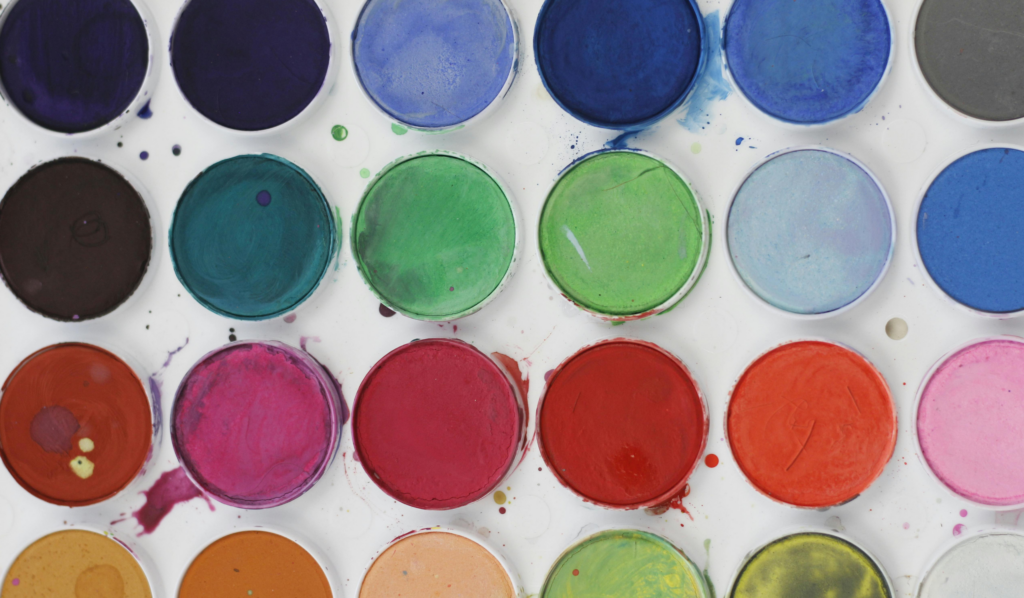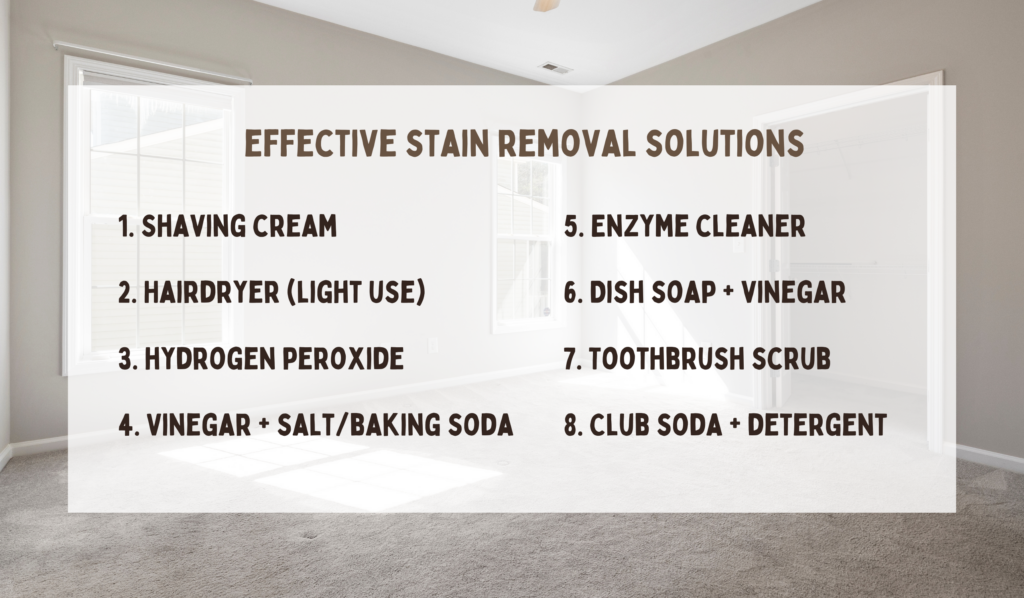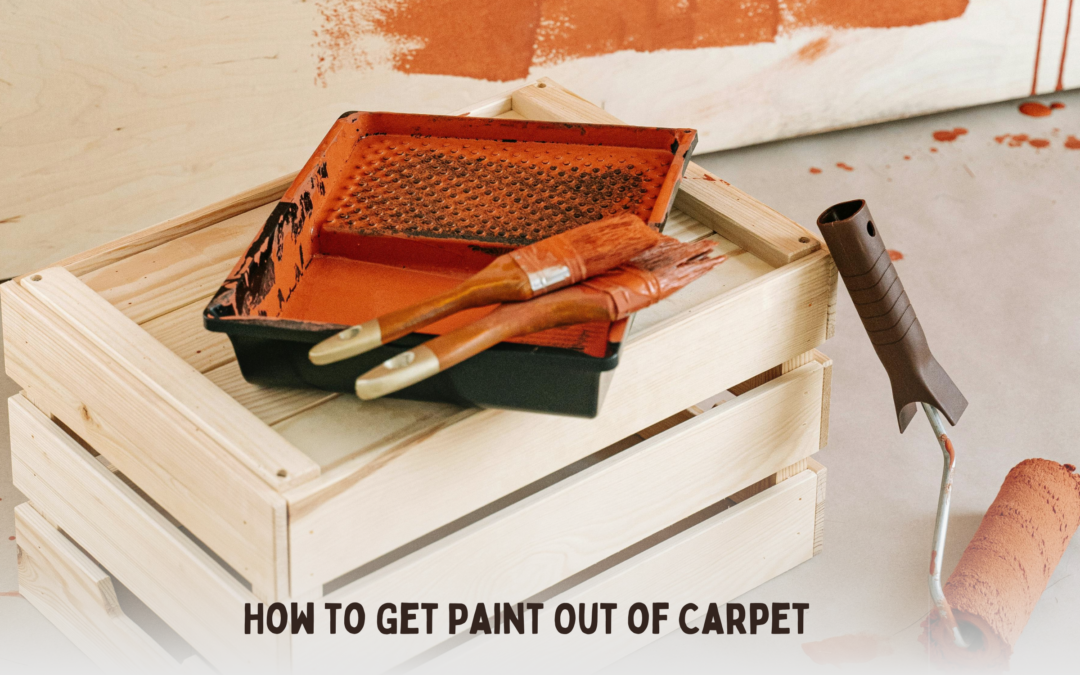One of the most common challenges people face during home improvement projects is figuring out how to deal with paint spills on carpet. Maybe it was the kids getting a bit too creative, or you were just touching up a wall when the tin tipped—either way, paint in the carpet is one of those heart-sinking moments that can turn your day upside down. But take a deep breath. Every type of paint mess has a solution, and the good news is: it’s not game over for your carpet.
To get paint out of carpet, blot the area immediately, use the right cleaning agent for the paint type, and lift the stain gently without scrubbing. Timing and technique are key—acting fast with the right tools can save the fibres from permanent staining. Most paint stains can be removed from carpet with the right approach, timing, and cleaning method—no matter the type of paint or how long it’s been there.
This guide isn’t just a copy-paste from cleaning labels or random hacks pulled off social media. It’s real-world advice, drawn from years of experience, to help you deal with these stains the right way—based on the material involved and how long it’s been sitting there.
First Things First: Don’t Panic, Do This
The moment a spill touches the carpet, timing matters more than anything else. But just as important is how the situation is handled in those first few minutes. Acting quickly and calmly can stop a small mishap from becoming a permanent eyesore.
Here’s what should be done immediately:
- Stop the spread. Use whatever’s within reach—old towels, newspapers, or even a flat baking tray—to create a barrier around the spill. This helps contain the paint before it seeps further into the carpet fibres.
- Blot, don’t rub. Press down gently with dry paper towels to soak up as much paint as possible. Avoid rubbing, which forces pigment deeper into the fibres. Think of it like soaking up soup, not scrubbing a pot.
- Identify the type of paint. Is it latex, acrylic, or oil-based? Check the paint tin if it’s still nearby. Knowing the type will guide the best removal method and whether water, alcohol, or solvent is needed.
Know Your Enemy: Types of Paint and What They Mean for Your Carpet

Every spill has its own personality, and knowing what you’re up against is half the battle. Different types of coatings behave in unique ways when they hit carpet, and identifying the kind you’re dealing with can make stain removal far more effective.
Latex Paint – This water-based paint is common in many households and is typically used on interior walls. It’s relatively easy to clean while wet but becomes more stubborn as it dries.
Acrylic Paint – Often used in arts and crafts, acrylic paint dries quickly and adheres strongly to carpet fibres. Once dry, it can be more difficult to remove without the right tools or solutions.
Oil-Based Paint – Known for its durability, oil-based paint is also known for being difficult to clean. It’s thick, sticky, and requires specific solvents like turpentine or mineral spirits for removal.
The Wet Paint Situation: Strike While the Iron’s Hot
If the paint is still wet, this is the best time to act. The sooner it’s addressed, the easier it is to lift from the carpet fibres before it sets.
For latex or acrylic paint, use warm water mixed with a small amount of dish soap—clear and dye-free is ideal—to gently treat the area with a clean white cloth.
Step-by-step:
- Blot up any excess paint using paper towels—do not rub.
- Dip the cloth in soapy water and gently dab the affected area.
- Start cleaning from the outer edges of the stain, working inward to prevent spreading.
- Switch to a clean cloth as paint transfers to avoid reapplying colour.
- Once the paint has lifted, rinse the area with cold water to remove any residue.
For oil-based paint, removal requires more care. Turpentine or mineral spirits can be effective, but these solvents should never be applied directly. Dampen a cloth with the solvent, test it on a hidden patch of carpet first, and use it to dab the stain. Ensure the space is well ventilated, as these products emit strong fumes.
When dealing with spray paint, a solution such as isopropyl alcohol or acetone may be required. Caution is key here—these are powerful substances that can strip colour or damage carpet fibres if overused. Always perform a spot test and apply sparingly.
In the case of dark or heavily pigmented paints like navy blue or forest green, a few drops of glycerin can be added to the cleaning mix. Glycerin softens and helps lift pigment from fibres, especially useful for deeper tones that tend to cling to carpet.
Dried Paint? It’s Not Too Late, But It’s a Project
If a paint spill was discovered too late—or if an attempt to clean it has hardened it into a crusty patch—it may look unsalvageable, but restoration is often still possible. For dried latex or acrylic paint, the process starts with softening the paint to make it easier to lift:
- Soften the paint. Warm water can help, but for stubborn spots, applying steam is often more effective. Holding a steam iron above a damp towel (not directly on the carpet) can loosen the paint.
- Gently scrape. Use a blunt butter knife or a spoon to carefully lift the softened paint. Avoid anything sharp that might damage the carpet fibres.
- Apply alcohol or vinegar. Dab the area with rubbing alcohol or white vinegar and allow it to sit for a few minutes. This helps break down the remaining paint.
- Repeat patiently. Removal often happens in layers. Avoid aggressive scrubbing that could damage the carpet’s texture or colour.
For dried oil-based paint, removal is more delicate. A small amount of turpentine or mineral spirits can be applied using a soft-bristled brush or cotton cloth. Work it in gently without oversaturating the area, and always test on an inconspicuous spot first to avoid discolouration.
Beyond the Basics: Hidden Tips That Might Surprise

Some of the most effective stain removal solutions come from unexpected sources—everyday items not typically linked to carpet care but surprisingly powerful when used correctly. These clever tricks go beyond the usual methods, offering a creative and chemical-savvy approach to getting your carpet looking fresh again.
1. Shaving cream
When dealing with water-based paint, a small amount of plain, foaming shaving cream can help lift pigment from carpet fibres. Apply gently, allow it to sit for a minute or two, then blot and rinse.
2. Use a hairdryer—sparingly
After cleaning a damp area, a hairdryer on a low setting held at a safe distance can help dry the carpet quickly, which reduces the risk of mould. Just be sure not to overheat the spot, as this could cause the fibres to stiffen or warp.
3. Spot treat with hydrogen peroxide
This works best on light-coloured carpets. A small amount applied to a clean cloth can help lift residual stains left behind after paint removal. Always test an inconspicuous area first to avoid lightening the carpet.
4. Add a bit of salt or baking soda to vinegar
This creates a mild abrasive paste, ideal for gently scrubbing dried paint without causing fibre damage. It’s especially useful for older, set-in stains.
5. Enzyme-based pet stain removers
Surprisingly, these can work on some acrylic paint stains due to their ability to break down organic compounds. This is particularly helpful on carpets that have aged or absorbed multiple spills over time.
6. Liquid dishwashing detergent with white vinegar
This duo forms a pH-balanced solution that helps neutralise leftover paint residue. It’s especially effective on synthetic carpets that are more resistant to fading.
7. Massage in with a toothbrush
For persistent dried paint, a soft toothbrush offers more control than a larger brush. It’s gentle enough to avoid damage while allowing cleaning solutions to penetrate deep into the fibres.
8. Club soda with a few drops of detergent
This fizzy mix can help lift fresh paint from mid-pile carpet. It’s a gentle alternative to harsher chemicals and works well when blotting quickly after a spill.
The Aftercare: Don’t Let the Fix Cause More Trouble

Once the paint appears to be gone, it’s important to take a few extra steps to make sure the stain doesn’t return—and that the carpet remains clean, fresh, and safe to walk on.
1. Rinse the Area Thoroughly
Use plain water to flush out any leftover cleaning solution or residue from solvents or the paint itself. Even if the stain appears gone, trace amounts of chemicals can linger in the fibres. Skipping this step can lead to stickiness that attracts dirt over time, making the carpet look dull or dirty again.
2. Dry It Properly
Moisture is a hidden threat when it comes to carpets. If the cleaned area isn’t completely dry, mould and mildew can develop beneath the surface—bringing health risks and persistent odours. Open windows for ventilation, use fans for airflow, or run a dehumidifier to speed things up and ensure no moisture gets trapped.
3. Fluff the Fibres
After scrubbing or blotting, carpet fibres often get matted or flattened—especially in thick, plush types. Use the edge of a spoon or a soft brush to gently lift the pile and blend the texture back in with the surrounding carpet. This also helps the spot dry more evenly.
4. Deodorise If Needed
Certain paints, cleaning agents, or old stains can leave behind a lingering smell. To freshen the area, sprinkle bicarbonate of soda (baking soda) generously over the spot and leave it overnight. Vacuum it up the next day to absorb odours without harsh chemicals.
5. Check the Next Day
Sometimes, stains that seem gone can reappear after the carpet dries—especially with darker or oil-based paints. Check the area under natural daylight and touch it to see if any residue remains. A quick follow-up treatment can prevent long-term staining or discolouration.
Let’s Talk Prevention: Keeping Paint Out of Carpet for Good

While the focus is often on cleaning up after a spill, prevention is always the better option—especially when working near carpeted areas. A few simple habits can save a great deal of hassle later:
- Always use a durable drop sheet—plastic or canvas is best. Avoid old bedsheets, as liquid can seep right through.
- Secure corners and edges with painter’s tape, and weigh them down to prevent slips or folds.
- Move all nearby furniture, even if it feels unnecessary. Navigating around furniture legs or under items often leads to accidental messes.
- Keep a damp cloth or sponge nearby while painting to quickly wipe up any drips before they reach the carpet.
- For detailed work, like painting skirting boards, use knee pads and trays to steady the body and tools.
- If you’re using a spray indoors, make sure every exposed surface is well protected with plastic film, and boost ventilation to manage overspray.
Prevention isn’t just easier than cleaning—it protects carpet fibres, prolongs the lifespan of flooring, and maintains a safer, healthier space overall.
Making Carpet Cleanup Count: The Smarter Way to Handle Paint Spills
At Right Price Carpet Cleaning, we’ve handled all kinds of paint mishaps—big and small. Whether it’s a fresh splash or a stubborn dried stain, the right cleaning method depends on the paint type, how long it’s been there, and the carpet material. Acting quickly and using the right tools can make all the difference.
A bit of prep—like using proper drop sheets—goes a long way in preventing stains. But if things don’t go to plan, knowing what to do next matters. With a thoughtful approach and expert help when needed, most paint stains can be removed without replacing the carpet—leaving the space clean, fresh, and welcoming again.
Taking the right steps ensures the floor looks its best and holds up well over time. It’s all about restoring comfort, appearance, and confidence in the space you care about most.
Frequently Asked Questions
Does vinegar remove paint from carpet?
Yes, vinegar can help remove water-based paints like latex or acrylic. It works best when the paint is still fresh or slightly softened. Apply white vinegar directly to the stain (after testing a small area first), let it sit for a few minutes, then blot gently with a clean cloth. It may not be effective on oil-based paints without additional products.
Does dish soap remove paint stains?
Dish soap is one of the most accessible and gentle cleaning agents for water-based paint. Mixed with warm water, it can lift fresh paint before it sets into the fibres. It’s ideal for light cleaning without harsh chemicals, especially on synthetic carpets.
What is the best product to remove paint from carpet?
The best product depends on the type of paint. For water-based paint, a mix of dish soap and warm water usually works well. For tougher stains like oil-based paint, mineral spirits or turpentine (used cautiously) are more effective. For acrylic or spray paint, rubbing alcohol or acetone may help—but always test an inconspicuous spot first.
How do you remove dried paint?
Start by softening the dried paint with steam or warm water. Once softened, gently scrape off the surface using a blunt tool. Apply a cleaning agent suited to the paint type—vinegar or alcohol for water-based, and solvent for oil-based. Repeat the process with patience, working in layers until the residue lifts.
How do you paint without removing carpet?
Use a heavy-duty drop sheet to cover the entire carpeted area, and secure the edges with painter’s tape. For detail work near the floor, consider using painter’s shields or cardboard under the baseboard area. Always keep a damp cloth nearby to catch any drips immediately.





Recent Comments